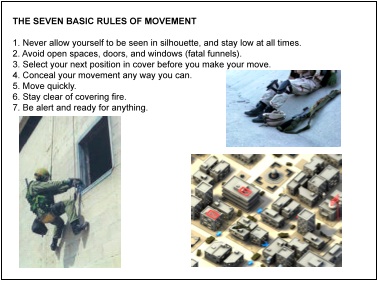Tactics 101: 025. Urban Operations: Truisms and Nuggets

Armor. The role of tanks in urban warfare can be significant if carefully managed. Tanks can’t roam the urban landscape with impunity as they do in the flatlands and deserts. Here, they are not king. They are bomb magnets and they require an escort—an infantry escort. Tanks are best employed in the offense as support for combined arms, infantry dominant, urban assault units. Tanks are effective only when protected by infantry. In Grozny, the Russian commanders sent their tanks in without infantry. They were sitting ducks, easily destroyed by bombs dropped on turret tops, blind spots to the crew. Tanks in support of infantry act as “assault guns” that deliver concentrated, sustained fires to reduce held strongpoints.
{default}Artillery. Indirect fire within a city is problematic. Despite the difficulty of its employment, artillery has played an important role in urban war. Artillery has two distinct roles: to isolate or prevent isolation with indirect-fire outside the built-up area and to provide direct-fire support within the built-up area. Delay fuses are used to penetrate one or more floors before exploding, thus driving the enemy to the ground where infantry and armor can attack them. Artillery can be positioned to fire perpendicular to the direction of movement of assaulting forces thus minimizing fratricide. Artillery is effective in interdicting enemy supplies, evacuation, and the movement of reinforcements. It disrupts the enemy’s rear areas; it physically and psychologically harasses the enemy; and it is excellent as a direct-fire weapon within cities. Artillery employed in the direct-fire role has proved useful in the reduction of strongpoints. The major setback for artillery is rubbling which can create obstacles for the attacker and reinforcement for the defender, as was the case in Monte Cassino in WWII when U.S. artillery prep fires made the German defense all the more impregnable. As stated before, indirect fire within a city is problematic. The most favored indirect fire weapon is the one with a high-angle trajectory. These high-angle fire weapons are mortars. The mortar is the most used indirect-fire weapon in urban combat. The mortar’s high angle of fire allows the round to reach the street level accurately without being masked by surrounding structures.
Antiaircraft Artillery. Antiaircraft artillery (AAA) is useful in a ground fire role in urban warfare. It was used during WWII against assaulting personnel but has been used more frequently in recent times against buildings, rather than against people. Its high rate of fire makes it an excellent shock weapon with tremendous destructive potential. However, that high volume of fire makes ammunition resupply difficult.
[continued on next page]

